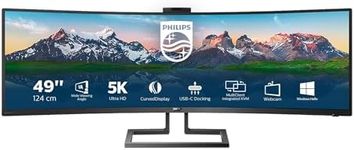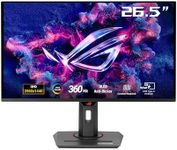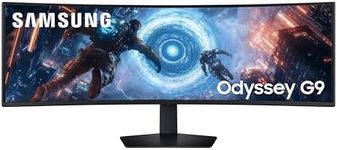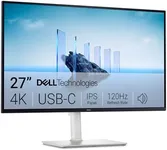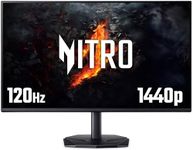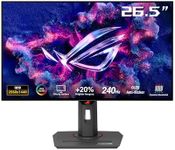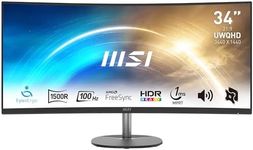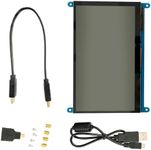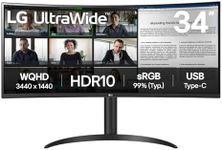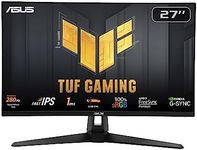Buying Guide for the Best Monitors
Choosing the right monitor can significantly enhance your computing experience, whether you're using it for work, gaming, or general use. The key is to understand your specific needs and how different specifications can meet those needs. Monitors come in various sizes, resolutions, and with different features that can affect your viewing experience. By understanding these specifications, you can make an informed decision that will provide you with the best performance for your particular use case.Screen SizeScreen size is measured diagonally from one corner of the display to the opposite corner. It is important because it affects how much you can see at once and how immersive your experience will be. Smaller screens, typically under 24 inches, are suitable for basic tasks and small spaces. Medium-sized screens, around 24 to 27 inches, are versatile for both work and play. Larger screens, over 27 inches, are great for gaming, design work, or if you want a more immersive experience. Consider your desk space and how far you sit from the monitor when choosing the size.
ResolutionResolution refers to the number of pixels that make up the display, usually given as width x height (e.g., 1920x1080). Higher resolutions mean more pixels, which can provide clearer and more detailed images. Common resolutions include Full HD (1920x1080), QHD (2560x1440), and 4K (3840x2160). Full HD is sufficient for general use and basic gaming. QHD offers a sharper image and is good for gaming and professional work. 4K provides the highest clarity and is ideal for high-end gaming, video editing, and design work. Choose based on the clarity you need and the capabilities of your computer.
Refresh RateRefresh rate is the number of times the monitor updates with new information per second, measured in hertz (Hz). It is crucial for smooth motion display, especially in gaming. Standard monitors have a refresh rate of 60Hz, which is adequate for general use. For gaming, higher refresh rates like 120Hz, 144Hz, or even 240Hz can provide smoother gameplay and a competitive edge. If you're a gamer, consider a higher refresh rate. For non-gamers, 60Hz is usually sufficient.
Panel TypePanel type affects the monitor's color accuracy, viewing angles, and response time. The main types are TN, IPS, and VA. TN panels are affordable and have fast response times, making them good for gaming, but they have poorer color and viewing angles. IPS panels offer better color reproduction and wider viewing angles, ideal for design work and general use. VA panels have the best contrast and are good for watching movies. Choose based on what you prioritize: speed, color accuracy, or contrast.
ConnectivityConnectivity refers to the types of ports available on the monitor, such as HDMI, DisplayPort, USB-C, and VGA. This is important for ensuring compatibility with your computer and other devices. HDMI and DisplayPort are common and support high resolutions and refresh rates. USB-C is becoming popular for its ability to transmit data and power. VGA is older and less common. Check what ports your computer supports and ensure the monitor has matching inputs.
Aspect RatioAspect ratio is the ratio of the width to the height of the screen. The most common is 16:9, which is suitable for most uses, including gaming and watching videos. Ultrawide monitors have a 21:9 or 32:9 aspect ratio, providing more horizontal space, which is great for multitasking and immersive gaming. Consider what you will use the monitor for and whether you need extra screen width for productivity or entertainment.
